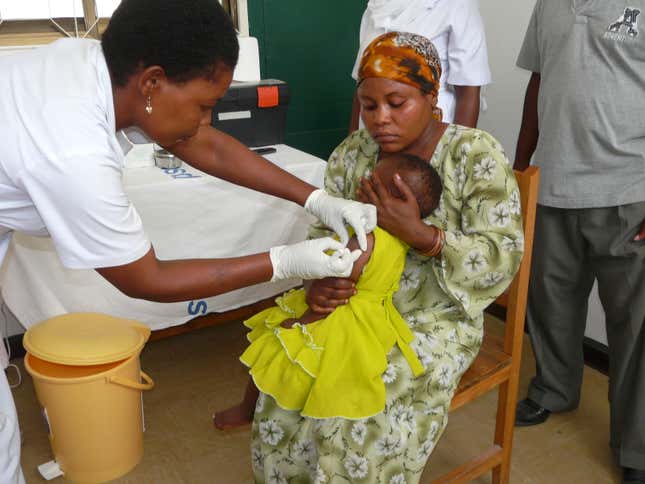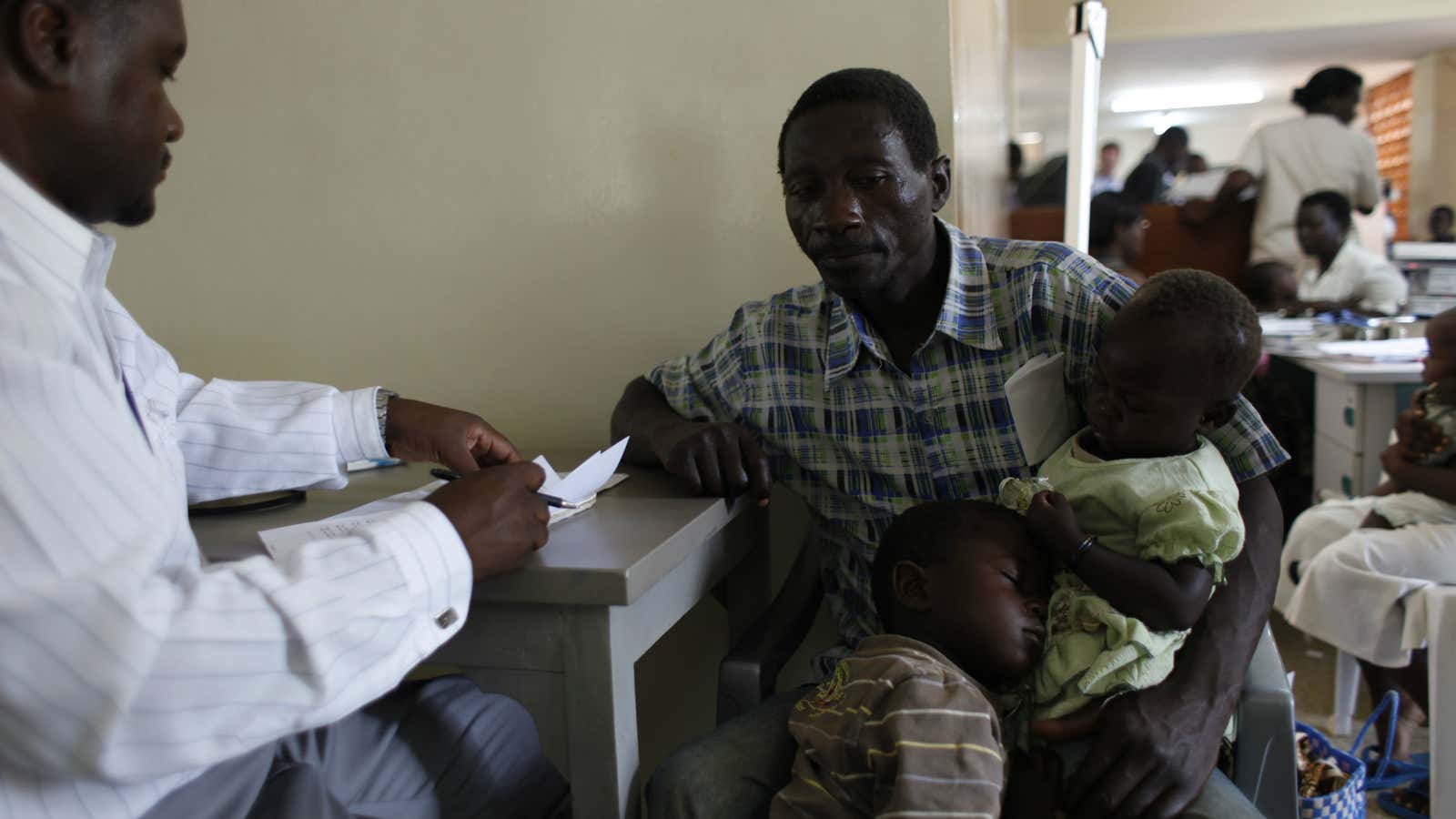For the past 30 years, Moncef Slaoui has been working on a vaccine for malaria; one of the world’s most persistent and deadly diseases.
Around 585,000 people die each year from the disease, most of them children under five years of age. Up to 90% of malaria deaths occur in sub-Saharan Africa, where the economic impact is huge. UN estimates put the cost to Africa at $12 billion per year.
In April, the results of a huge five-year trial across seven African countries showed that an experimental vaccine, RTS,S, developed by GSK and the Gates Foundation-backed PATH Initiative had a moderate, but positive impact on cases of malaria in children and infants. On Friday, the European Medicines Agency gave its approval to the RTS,S vaccine for children, setting in motion a process that could put the vaccine into the field by the middle of next year.
“I was crying,” Slaoui, now GSK’s chairman, global vaccines, says. “I was born in Africa, in a country which doesn’t have malaria — Morocco. But it’s a country where your siblings die [while you’re growing up]. It’s very impactful.”
The trial stage was conducted by hundreds of African and international researchers in the field across 11 sites in Burkina Faso, Gabon, Ghana, Kenya, Malawi, Mozambique and Tanzania. Its results, published in the Lancet, showed that it was around 30% effective in infants and 40% in toddlers.
“There is certainly room for improvement, but when you translate these numbers into the number of cases they prevent in the population, one really realizes the extent of how impactful this vaccine could be,” Slaoui says.
“It’s an enormous impact, when you know that there are 30 million infants born every year in sub-Saharan Africa, 500,000 of which will die of malaria.”
A second generation vaccine is already in development.

Concerted international efforts by organisations including the Global Fund to Fight AIDS, Tuberculosis and Malaria, have had a meaningful impact in Africa. The distribution of hundreds of thousands of bed nets, combined with insecticide spraying and low-cost treatment reduced mortality rates in Africa by 54% between 2000 and 2013 — accounting for more than 4 million lives saved — but a vaccine has been a white whale for global health professionals and the pharmaceutical industry.
Stopping a parasite
The challenge has been largely technical. The malaria parasite is, as David Kaslow, vice-president of product development at PATH, says: “a really wily pathogen. What we’re talking about here is not some small virus or bacteria. This is a parasite… They evolved with humans for millennia.”
When a mosquito carrying the Plasmodium falciparum parasite bites a human, it takes a few minutes for the pathogen to reach the liver. There, it takes five more days to transform into another configuration and multiply, finally infecting the red blood cells and causing the illness.
For decades, researchers had been trying to make antibodies against the first stage of the parasite, in an attempt to prevent it from reaching the liver. Next, they tried to stimulate the creation of antibodies against the final stage. It was only as immunology improved throughout the 1980s and 90s that researchers, including Slaoui, were able to work on attacking the parasite in its middle stage, in the liver.
“This milestone tells us that it’s biologically and technically feasible to create malaria vaccines, and that we should continue to invest in vaccine R&D to develop the next generation of malaria vaccine,” Kaslow says.
“This now provides a foundation from which to build on. We’re no longer starting from 0% efficacy. We’re starting from more than 50% efficacy. That’s a much better place to start for the next generation of vaccines. And we do have a relatively rich pipeline of next generation vaccines that could have higher efficacy… When the goal is elimination and ultimately eradication, this gives us at least a foothold in developing that next generation vaccine. This gives us some very important clues as to go about doing it.”
Kaslow is quick to point out that the qualified success of the RTS,S vaccine is an important milestone, it is not a silver bullet.
“Despite good bed net coverage, despite good case management, despite indoor spraying, there are 584,000 deaths due to malaria, 198,000,000 cases of malaria every year,” he says. “We need new tools to combat this wily parasite. We just cannot let our foot off the gas on this, because it will come back with a vengeance. Lest anyone think the malaria problem is solved. It is not. We have got a way to go.”
